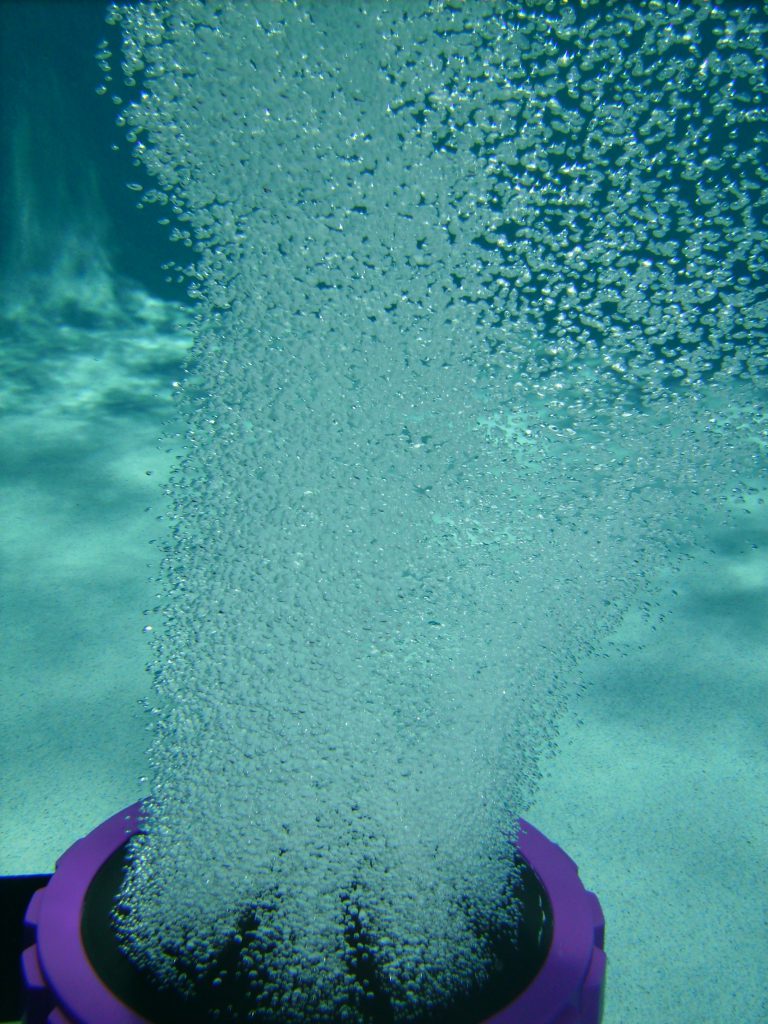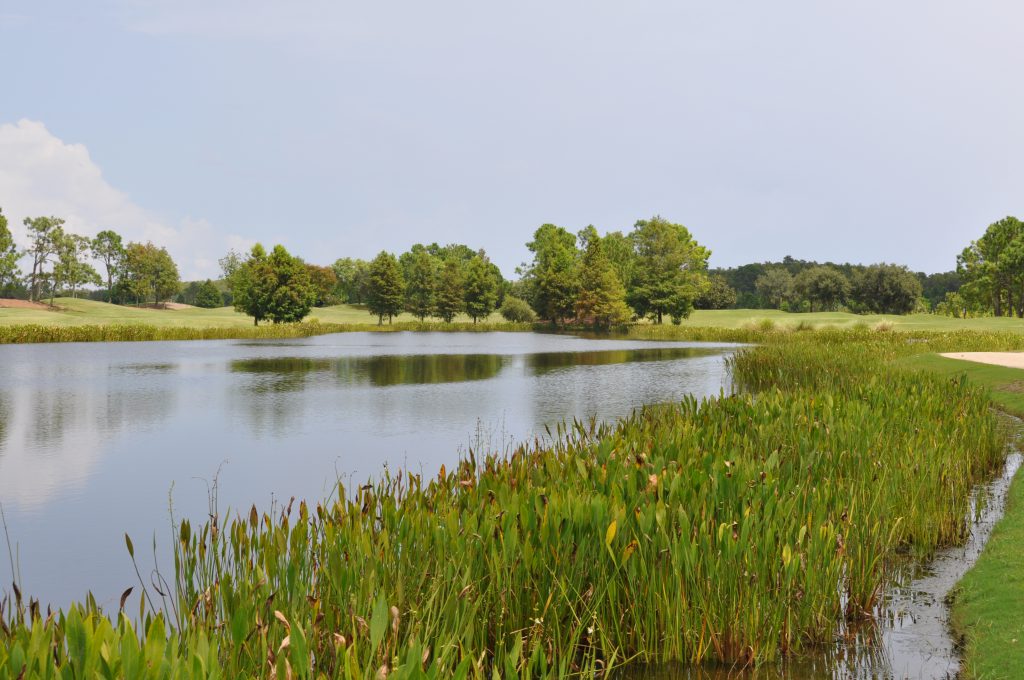

Five Irrigation Water Management Tips For Golf Course Superintendents
Whether the golf season is just getting started or already in full swing, it’s important to address the growing irrigation needs of your course. Turf health is highly dependent on the irrigation source and delivery system. While there are a multitude of management techniques that dictate the amount of irrigation water needed, there are also a handful of strategies that can be used to benefit your turf and help ensure that your waterbodies remain healthy. Healthy lakes and ponds equate to superior, reliable and predictable irrigation water quality
Conducting an audit of your irrigation system may be the best place to start when developing techniques to maximize the efficiency of your irrigation water supply. This audit should include documenting and repairing any leaking or malfunctioning irrigation heads, checking and confirming the overall output of the system, and adjusting any site specific needs for dry or wet areas by reducing or increasing the application time of these areas. In addition to conducting an audit of your irrigation system, collecting samples of your water sources and testing the water quality can help uncover any underlying water chemistry problems or nutrient imbalances.
Timely irrigation can be one of the more overlooked techniques for proper irrigation application. Sometimes tournaments, golf outings, and other member play can interfere with proper and timely irrigation applications. However, by irrigating based on the plant’s needs rather than other factors, you can often lower water use and have healthier turf.
Accurate knowledge of lake volumes allows the turf manager to determine precisely how much irrigation water is available at any given time. In a world where freshwater seems to be more and more valuable, it is critical to know how much water is available. Bathymetric studies of the lake are the best way to accurately determine the actual water volume of your irrigation lake. Installing a water level measurement device in the lake combined with the bathymetric data will provide water availability information during all climatic conditions. When combined with an audit of the output of your irrigation system, exact application amounts can be determined as well as the amount of water left in reserve for future applications.

Nuisance algae and vegetation control should be at the top of the list for anyone that has a waterbody on their property, especially if that waterbody supplies your irrigation pump house. Nuisance vegetation, if left unmanaged, can clog irrigation intake screens, damage pumps and valves, and ultimately make its way into the hundreds, or even thousands, of irrigation heads on a golf course. Clogged foot valves, rock screens, and nozzles reduce the overall output of the irrigation head, ultimately reducing the amount of water received by the turf. Continued cleaning of these heads can take valuable time away from other duties around the course and can oftentimes be solved by proper treatment and prevention of nuisance algae and submersed aquatic vegetation.
Many times nutrient imbalances, specifically high nitrogen and phosphorus levels, can lead to these nuisance vegetation and algae problems. Submersed aeration combined with nutrient remediation strategies have shown to significantly reduce freely available nitrogen and phosphorus levels. This reduction can ultimately lead to lower growth rates of algae and aquatic weeds in nutrient rich waterbodies.
Proper fertilizer and pesticide application is one of those concepts drilled into turf manager’s heads in school, during pesticide certification courses, and through real world experience as they learn and grow professionally. Proper fertilizer application allows the turf to perform optimally when growing conditions allow. Over-fertilization can require excess water for the turf to keep up with the available nutrients, yet under-irrigation may leave nutrients unavailable for the plant to uptake. With the price of fuel, labor and fertilizer, it is important to stay in the middle of the fertility scale. Pesticides, including herbicides, insecticides, and fungicides are vital in producing high quality turf. Once again, water plays a key role in the application of these pesticides. However, applying too much water over extended periods of time can lead to disease, requiring the application of a fungicide as well as increasing weed pressure such as sedge growth where water may collect.

The installation of beneficial buffers, beneficial shoreline plantings, and buffer management is one of the single most important things anyone with a waterbody can do. A maintained buffer of dense turf that extends 3-6 feet from the water’s edge can greatly reduce nutrients from entering the water during and after heavy rain events. Maintained buffers also help to reduce sediment loss from erosion along the shoreline. Beneficial buffer plantings, or shoreline plantings such as pickerel weed, arrow arum, and or duck potato help to stabilize the shoreline, use available nutrients in the benthic region and attract wildlife to your pond’s edge.
Overall, proper water management creates high quality turf and vice versa. While there are so many items that require the attention of the Golf Course Superintendent these days, finding the right balance must include optimization of the irrigation system and application techniques. If you find this balance, you will undoubtedly make your life and the turf you manage far better.
Algae and Aquatic Weed Control
Contact Us to Enhance Your Golf Course
SOLitude Lake Management is a nationwide environmental firm committed to providing sustainable solutions that improve water quality, enhance beauty, preserve natural resources and reduce our environmental footprint. SOLitude’s team of aquatic resource management professionals specializes in the development and execution of customized lake, stormwater pond, wetland and fisheries management programs that include water quality testing and restoration, nutrient remediation, algae and aquatic weed control, installation and maintenance of fountains and aeration systems, bathymetry, shoreline erosion restoration, mechanical harvesting and hydro-raking, lake vegetation studies, biological assessments, habitat evaluations, and invasive species management. Services and educational resources are available to clients nationwide, including homeowners associations, multi-family and apartment communities, golf courses, commercial developments, ranches, private landowners, reservoirs, recreational and public lakes, municipalities, drinking water authorities, parks, and state and federal agencies. SOLitude Lake Management is a proud member of the Rentokil Steritech family of companies in North America.









